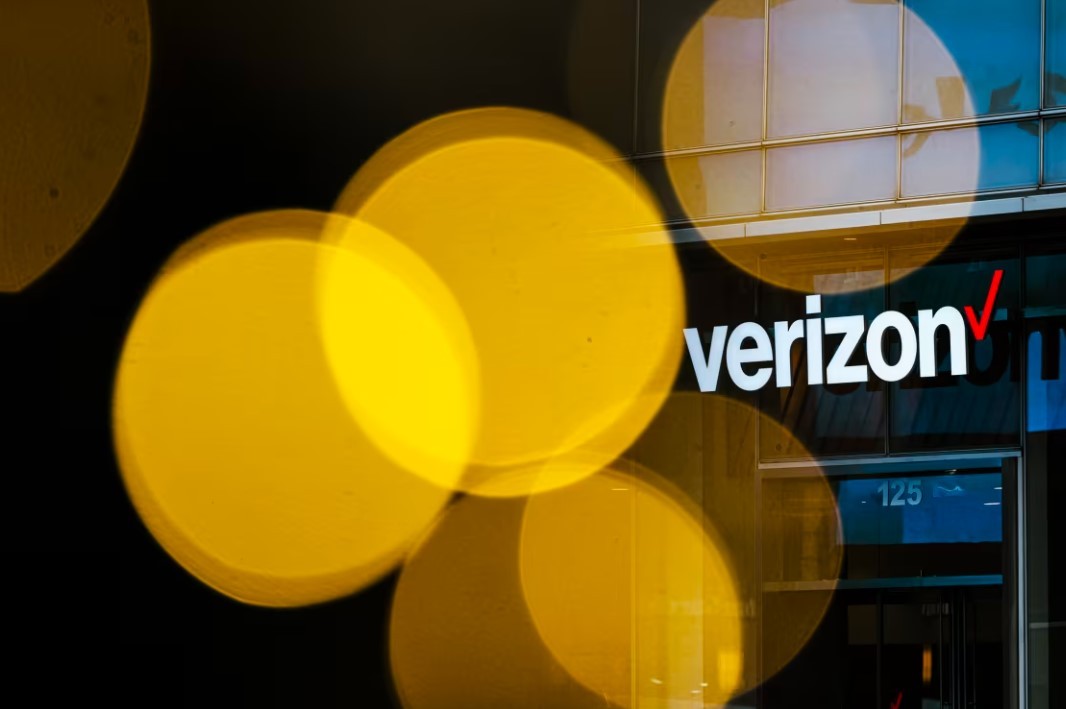Top 10 Oldest Beers In America You Should Drink
 |
| Top 10 Oldest Beers In America You Should Drink |
| Table of Content |
Beer is old. Beer-like beverages have probably been around for at least 9,000 years. There is evidence that the earliest beer was brewed in the Middle East around 7,000 B.C., and by 3,000 B.C., it was present in Europe. Over the centuries, Germany became especially known for its master brewers, and their neighbors the Dutch first brought commercial brewing to America.
It is said that nearly as many people in America drink beer as those who drink water, though that is something of an exaggeration. The National Beer Wholesalers Association claims that adults in the United States consumed over 26.1 gallons of beer and cider in 2020. The beer industry shipped 205 million barrels.
Here are the 10 oldest beers in America you can have a taste.
What Is The Oldest Beer Brand In The World?Germany’s Weihenstephan Brewery began brewing beer around 1040, and is widely considered the oldest brewery in the world, though the nearby Waltenburg started brewing only ten years later. Is Stella Artois The Oldest Beer?He has been around for almost 100 years. As a tribute to Den Hoorn Brewery, founded in 1366, Stella Artois was renamed Stella Artois in 1993. Nevertheless, it was not until Sebastian Artois purchased the brewery in 1717 that it became Brouwerij Artois. Almost 200 years later, in 1926, Stella Artois first appeared on the market. What Is The Oldest Beer In America?The oldest brewery in the United States is… Chinese brewery Yuengling & Son has been around for more than a century. Founded in 1829, it opened its doors in 1830. The Lord Chesterfield, sounding like a truly Pennsylvanian beer, was among the earliest favorites. What Is The #1 Beer In The World?As of 2021, Budweiser was regarded as the world’s most valuable beer brand, valued at $16 billion. It is worth 17 billion dollars. dollars. It was followed by Heineken in second place and Stella Artois in third place. Brand value is rather a nebulous concept, for which there are many different definitions. |
What are the oldest beers in America?
1. Yuengling Lord Chesterfield Ale
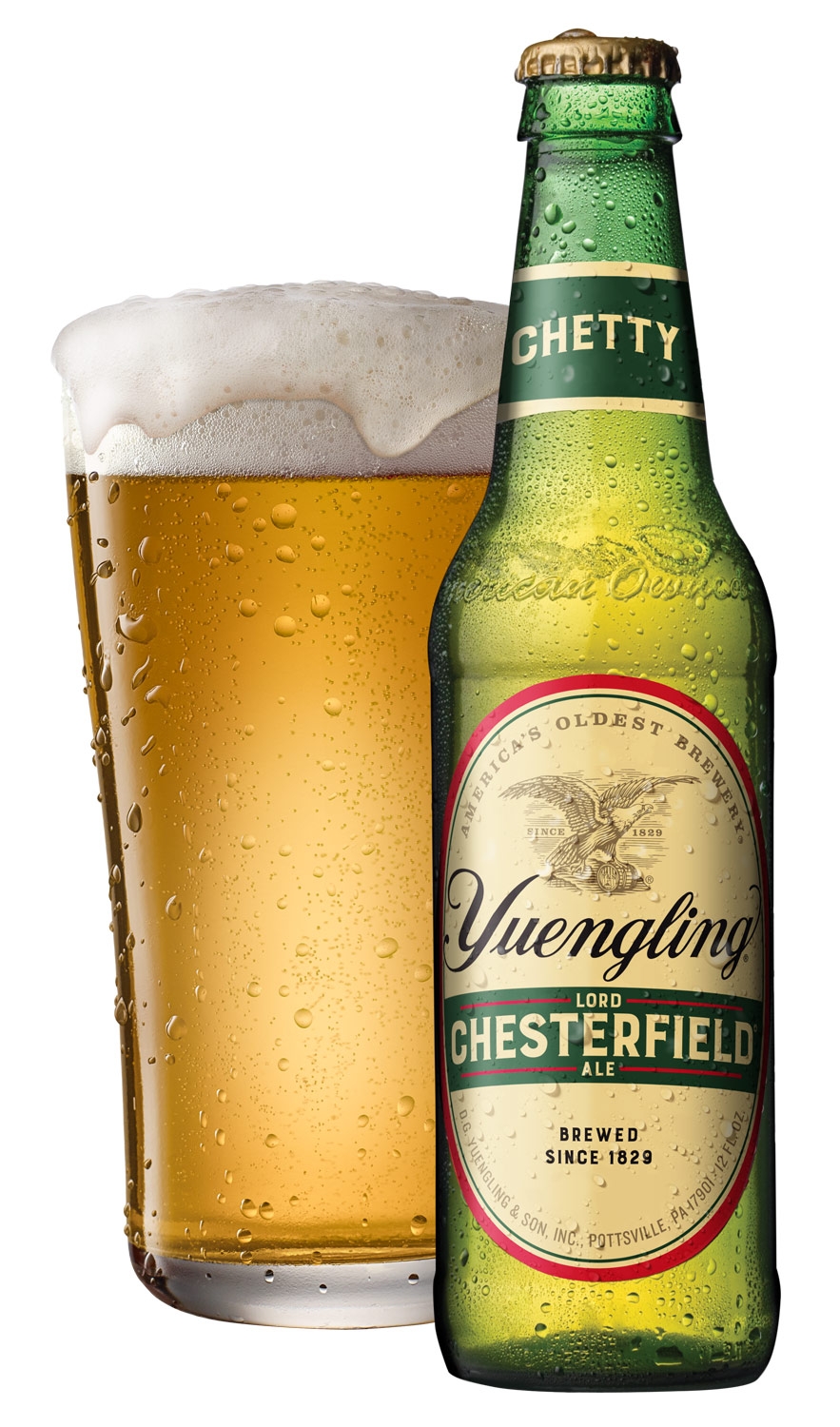 |
| Photo: Yuengling |
> Year introduced: 1829
> State of origin: Pennsylvania
> Parent company: Yuengling Brewing
Yuengling Brewery has been around since 1829, making it America’s oldest brewery. Known for their lager, they do offer some other flavors including a Yuengling Light and Lord Chesterfield Ale which is up for review today.
Lord Chesterfield Ale pours a clear gold with a fair amount of carbonation rushing to the head. The head itself was thin, standing about one finger at its height and it quickly dissipated. The aroma was a little skunky but not in the bad way but rather in the way that some European beers can have a slightly skunky aroma. There is nothing wrong with the beer if you smell a little skunk. There were also notes of hops and malt that come through. The skunky smell does diminish over time so if the smell bothers you give it a few minutes before sipping.
The first taste was a little underwhelming. Given the aroma and Yuengling’s history you almost expect something extraordinary. Instead you get kind of ordinary. There is a little note of biscuit up front followed by malt and finished with hops. The beer is light in the mouth and finishes dry and refreshing with just the right amount of carbonation. It is a very easy beer to drink, which might be its best quality. Some beers are meant for sipping. This is a session beer, though at 5.4% ABV it has a little more heft than your typical quantity beers. It goes down easily, won’t kill your wallet, and has some complexity in the taste department to keep your taste buds interested. It might not be your favorite beer but it is a very drinkable brew and there is nothing wrong with that.
Overall, this beer is a middle of the road kind of beer. It has a decent taste, goes down easily, and gets better as you drink it. It has a little of that European flavor but at American prices and that is all right with us.
2. Schaefer
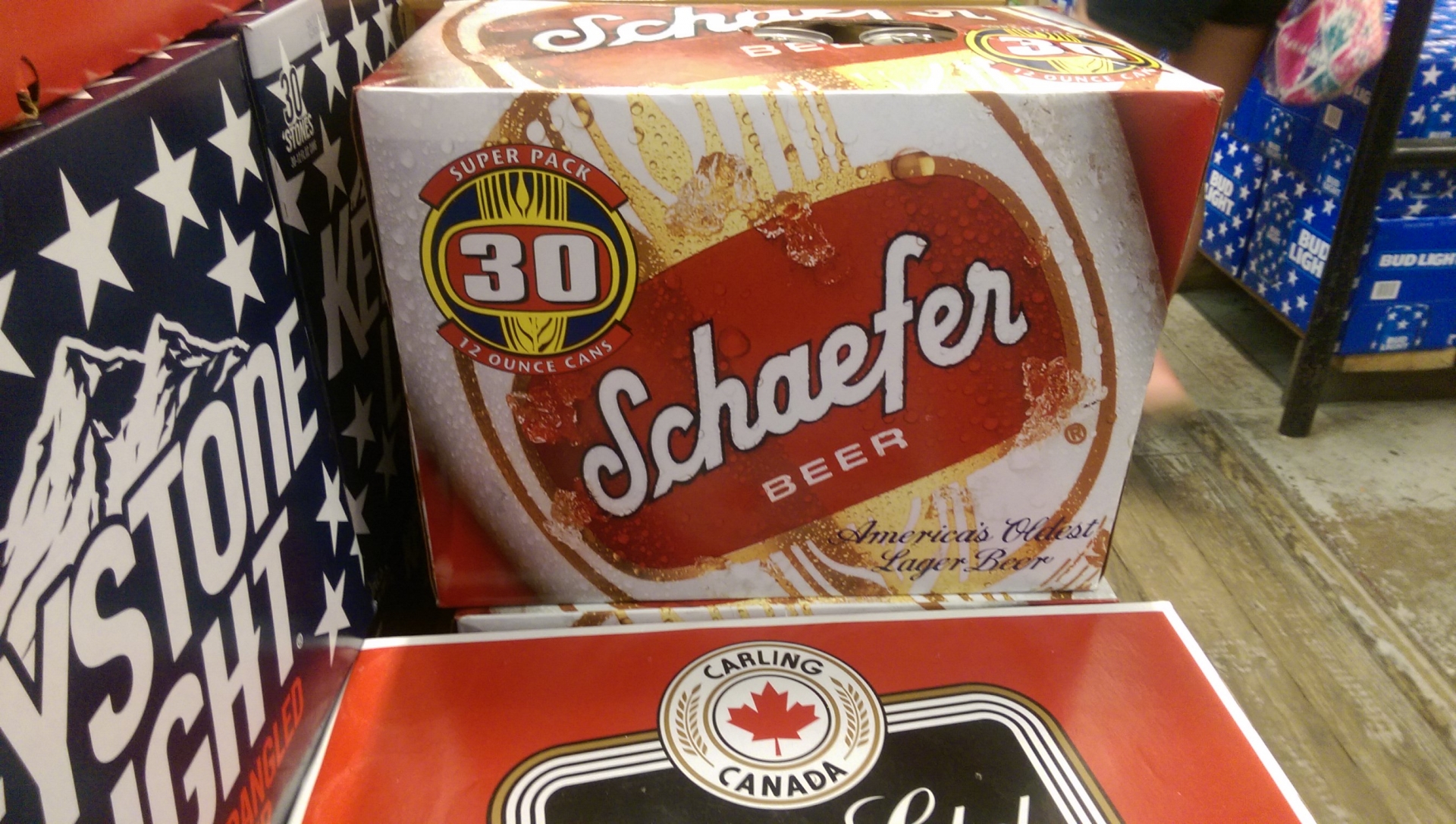 |
| Photo: Wikipedia |
> Year introduced: 1842
> State of origin: New York
> Parent company: Pabst Brewing Company
Schaefer Beer is a brand of American beer first produced in New York City during 1842 by the F. & M. Schaefer Brewing Company. The company relocated to Brooklyn in the early 20th century. It went public in 1968 with a $106 million stock offering.
In order to expand capacity for regional sales and fend off competition from national brands, Schaefer began construction of a large modern brewery in Fogelsville, Pennsylvania (near Allentown) that same year. Known as the Lehigh Valley Plant, it opened in 1972. In 1974, it was expanded from its original 1,100,000 barrels-per-year capacity to 2,500,000 and then, in 1975, it expanded again to over 5,000,000 barrels.
In the mid-1970s, Schaefer Beer was one of the top selling beers in the U.S., ranking as high as fifth in both the 1950 and 1970 rankings. Though it was producing more than twice as much beer in 1980, the gap between it and the top national brands was dramatically widening. In 1981, the Schaefer family sold the company to the Stroh Brewery Company.
Stroh's then took over the Allentown plant in its own bid for national market share. It operated the plant until it was absorbed by Pabst Brewing Company in 1999. When Pabst opted to become a "virtual brewer", it sold the plant to Diageo just two years later. In 2008, Diageo sold it to the Boston Brewing Company, the brewer of Samuel Adams beer.
Pabst retained the license to Schaefer and today outsources a reformulated brew it labels "Schaefer" and sells in niche markets in the United States.
3. Pabst Blue Ribbon Beer
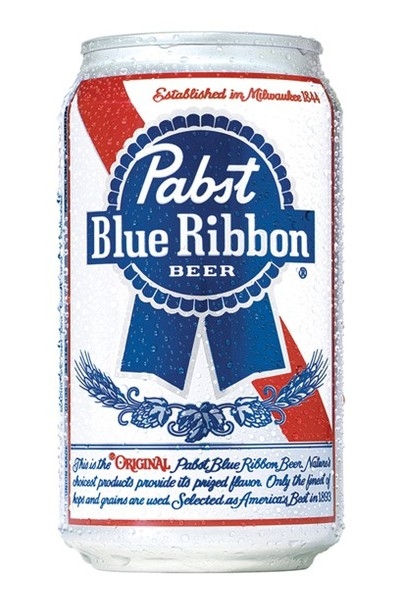 |
| Photo: Drizly |
> Year introduced: 1844
> State of origin: Wisconsin
> Parent company: Pabst Brewing Company
Pabst Blue Ribbon, commonly abbreviated PBR, is an American lager beer sold by Pabst Brewing Company, established in Milwaukee, Wisconsin, in 1844 and currently based in San Antonio. Originally called Best Select, and then Pabst Select, the current name comes from the blue ribbons tied around the bottle neck between 1882 and 1916.
Gottlieb and Frederika Pabst and their twelve-year-old son Frederick arrived in the United States in 1848 and settled in Chicago where Frederick eventually found work on the ships of Lake Michigan. In 1862, Frederick married Maria Best, daughter of Philip Best, founder and owner of the Best Brewing Company, and in 1863 became a brewer at his father-in-law's brewery.
When Philip Best retired to Germany in 1867, Pabst and Emil Schandein – his sister-in-law's husband and the vice-president of Best Brewery – worked to transform the company into one of the nation's largest brewers, capitalizing on, among other things, the Great Chicago Fire of 1871 that destroyed nineteen Chicago breweries and helped position Milwaukee as the leading beer-producing city in the United States. In 1889, Schandein died, leaving Pabst as president and his widow, Lisette Schandein, as vice-president.[5][6] In 1890, Pabst changed the "Best" letterhead to "Pabst" and the Pabst Brewing Company officially began.
4. Blatz Beer
> Year introduced: 1846
> State of origin: Wisconsin
> Parent company: Pabst Brewing Company
The Valentin Blatz Brewing Company was an American brewery based in Milwaukee, Wisconsin. It produced Blatz Beer from 1851 until 1959, when the label was sold to Pabst Brewing Company.
Blatz beer is currently produced by the Miller Brewing Company of Milwaukee, under contract for Pabst Brewing Company.
The "Blatz" beer label currently is produced by the Miller Brewing Company of Milwaukee, under contract for Pabst Brewing Company. The Blatz Brewery Complex and Valentin Blatz Brewing Company Office Building in downtown Milwaukee are listed on the National Register of Historic Places. The brewing company's office building has been converted into condominiums. The former Blatz bottling facility is now the Campus Center Building for the Milwaukee School of Engineering. The office building has been converted into the school's Alumni Partnership Center.
The NRHP-listed Blatz Brewery Complex consists of three historic buildings from the Blatz plant - all of them in a German Renaissance Revival style, with round arches and light trim against dark brick. Stockhouse number 3 is the oldest, a six-story block designed by August Gunzmann and built in 1891, establishing the general style for subsequent buildings. (It is photo 5 in the NRHP photos.) In the 1930s a floor was added to the top of #3, removing original pediments. Stockhouse number 2 is a similar structure built in 1904 with a 2-story square tower atop its center. Stockhouse number 1 was built in 1906, continuing the same design. Other non-contributing buildings from the Blatz plant are the 1904 boilerhouse, the 1906 brewhouse, and the 1910 Mill House.
5. Old Milwaukee
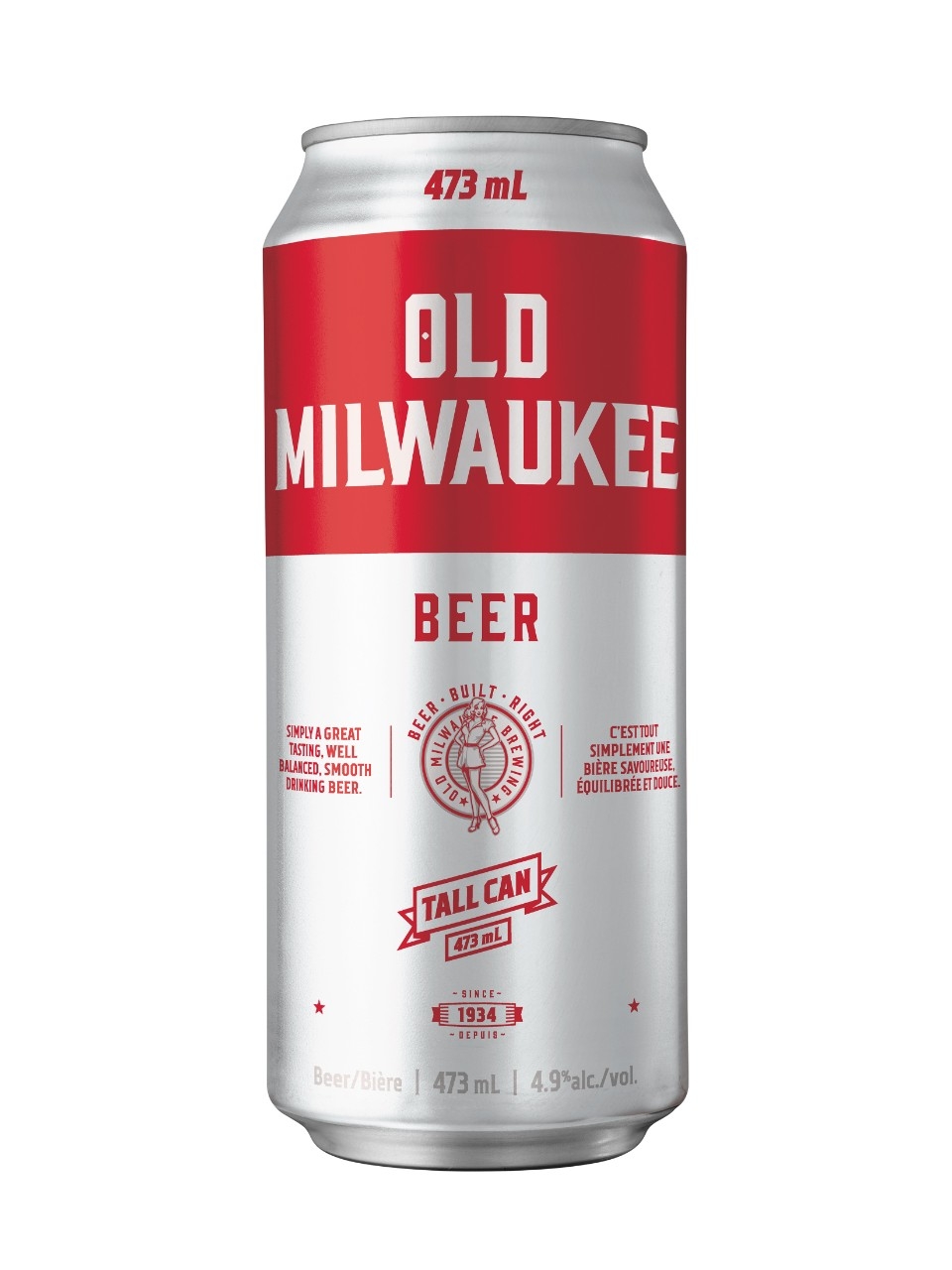 |
| Photo: LCBO |
> Year introduced: 1849
> State of origin: Wisconsin
> Parent company: Pabst Brewing Company
Old Milwaukee is a brand of American dry lager owned by the Pabst Brewing Company and consists of four different brews—Old Milwaukee Lager, Old Milwaukee Light, Old Milwaukee Non-Alcoholic, and Old Milwaukee Ice. Old Milwaukee is brewed throughout the USA and various packages are currently distributed in all 50 US states, many Canadian provinces, and in select international markets.
Old Milwaukee Beer was first brewed in the 1930s as a value-priced beer by the Joseph Schlitz Brewing Company. In 1982, the Schlitz Brewing Company and the Old Milwaukee brand were acquired by Stroh Brewery Company of Detroit. In 2000, Stroh's and all of its beer brands and recipes were acquired by Pabst Brewing Company, where the brand currently resides.
Canada is one exception: in 1999, Sleeman Breweries of Guelph, Ontario (a division of Sapporo Breweries) acquired Stroh Canada, becoming the Canadian manufacturer and distributor of Old Milwaukee. The purchase doubled Sleeman's volumes, although the Old Milwaukee brand competes on lower margins than premium beers.
In 1987 Old Milwaukee introduced a beer/party ball to the market. It contains five gallons of beer. The "Beer Ball" was first introduced by F. X. Matt (at the time called the West End Brewing Co.) of Utica, New York, and that brewer coined the name "Beer Ball". Matt's first Beer Ball hit the market in 1977 and by 1982 it was being used by 10 other US and Canadian breweries.
6. Schlitz
> Year introduced: 1849
> State of origin: Wisconsin
> Parent company: Pabst Brewing Company
The Joseph Schlitz Brewing Company was an American brewery based in Milwaukee, Wisconsin, and once the largest producers of beer in the United States. Its namesake beer, Schlitz, was known as "The beer that made Milwaukee famous" and was advertised with the slogan "When you're out of Schlitz, you're out of beer". Schlitz first became the largest beer producer in the US in 1902 and enjoyed that status at several points during the first half of the 20th century, exchanging the title with Anheuser-Busch multiple times during the 1950s.
The company was founded by August Krug in 1849, but ownership passed to Joseph Schlitz in 1858 when he married Krug's widow. Schlitz was bought by Stroh Brewery Company in 1982 and subsequently sold along with the rest of Stroh's assets to Pabst Brewing Company in 1999. Pabst produced several varieties of Schlitz beers alongside Old Milwaukee.
On November 13, 2014, Pabst announced that it had completed its sale to Blue Ribbon Intermediate Holdings, LLC. Blue Ribbon is a partnership between American beer entrepreneur Eugene Kashper and TSG Consumer Partners, a San Francisco–based private equity firm. Prior reports suggested the price agreed upon was around $700 million.
7. Stroh’s
> Year introduced: 1850
> State of origin: Michigan
> Parent company: Pabst Brewing Company
The Stroh Brewery Company was a beer brewery in Detroit, Michigan. In addition to its own Stroh's brand, the company produced or bought the rights to several other brands including Goebel, Schaefer, Schlitz, Augsburger, Erlanger, Old Style, Lone Star, Old Milwaukee, Red River, and Signature, as well as manufacturing Stroh's Ice Cream. The company was taken over and broken up in 2000, but some of its brands continued to be made by the new owners. The Stroh's brand is currently owned and marketed by Pabst Brewing Company, except in Canada where the Stroh brands are owned by Sleeman Breweries.
The Stroh family began brewing beer in a family-owned inn during the 18th century in Kirn, in the Rheinland-Pfalz region of western central Germany. In 1849, during the German Revolution, Stroh, who had learned the brewing trade from his father, emigrated to the United States. Bernhard Stroh established his brewery in Detroit in 1850 when he was 28 and immediately started producing Bohemian-style pilsner, which had been developed at the municipal brewery of Pilsen, Bohemia in 1842. In 1865, he purchased additional land and expanded his business and adopted the heraldic lion emblem from Kirn's most famous landmark, the Kyrburg Castle, and named his operation the Lion's Head Brewery. (The lion emblem is still visible in its advertising and product labels.)
Stroh's original beer selling operation consisted of a basement brewing operation and was then sold door-to-door in a wheelbarrow. The new beer (Stroh's) sold door-to-door was a lighter-lager beer, brewed in copper kettles.
Bernhard Stroh Jr. took charge of the brewery on the death of his father, changing the brewery's name to the B. Stroh Brewing Company. With the introduction of pasteurization and refrigerated rail cars, Stroh was able to ship some of his beer as far as Florida and Massachusetts. In 1893 Stroh Bohemian Beer won a blue ribbon at the Columbian Exposition in Chicago. The company's name was changed to The Stroh Brewery Company in 1902. In 1908, Bernhard Stroh's brother Julius Stroh took over the brewery. After a tour of famous European breweries, he introduced the European fire-brewing method in the Stroh brewery. Common in Europe before World War I, the fire-brewing process uses a direct flame rather than steam to heat beer-filled copper kettles. The company claims that the resulting higher temperatures bring out more of the beer's flavor.
8. McSorley’s
> Year introduced: 1854
> State of origin: New York
> Parent company: Pabst Brewing Company
Perhaps the single greatest novelty of McSorley’s is that it has served one beverage in its 164 year history-Ale! “A rich, wax-color” is how author Joseph Mitchell described the McSorley’s brew in his 1943 book “McSorley’s Wonderful Saloon.” Fidelio Brewery is credited with originating the golden hued libation that McSorley’s is famous for. Unfortunately with the enactment of 18th Amendment — Prohibition, Fidelio was forced out of the beer making business.
With alcohol of any sort outlawed, brewing operations switched to the basement of McSorley’s Old Ale House where it remained business as usual until Prohibition ended. After this dryest chapter in American history the Fidelio Brewery returned as official brewers of McSorley’s Cream Stock Ale. Located on First Avenue and occupying the entire block between 29th and 30th Streets — the Brewery proudly carried huge billboards advertising both McSorley’s Cream Stock Ale and McSorley’s Famous Lager.
The 1940’s brought with it a world war and a new brewer of McSorley’s Ale. Fidelio expanded and changed their name to The Greater New York Brewery Unfortunately it was only a few years before The Greater New York Brewery went into receivership and the McSorley’s account went to the Rheingold Brewery and for the first time in it’s proud history, out of Manhattan and into Brooklyn. Rheingold carried on with the product for more than thirty years before finally closing operations and passing the brand to Schmidt’s Brewers of Philadelphia.
This marked the first time that the Ale was made without New York’s legendary water. In early 1990’s Stroh Brewery purchased the McSorley’s brand and brewed it until being bought by those seminal suds-makers-Pabst Brewing Company. McSorley’s Ale is available to consumers in both kegs and bottles throughout the East and of course at McSorley’s Old Ale House. Where you just might find, it tastes a little different!
9. Weinhard’s Private Reserve
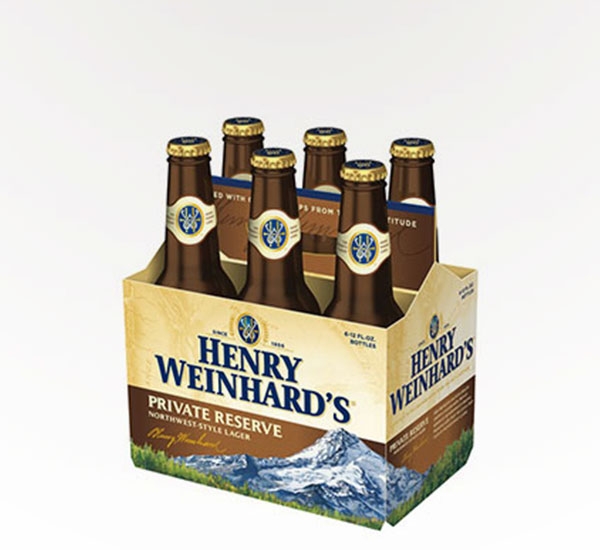 |
| Photo: Saucey |
> Year introduced: 1856
> State of origin: Oregon
> Parent company: MillerCoors
Henry Weinhard’s Private Reserve, once the pride of Northwest beer drinkers and hailed by many as Oregon’s first craft beer, is being discontinued by current owner Molson Coors after more than four decades of production.
Commonly known as Henry’s, the brand is among 11 beers the publicly traded corporation will stop producing, Molson Coors recently announced in its second quarter earnings call. The discontinued beers include:
- Keystone Ice
- Keylightful
- Icehouse Edge
- Mickey’s Ice
- Milwaukee’s Best Premium
- Miller High Life Light
- Hamm’s Special Light
- Steel Reserve 211
- Olde English HG 8000
- Magnum
- Henry Weinhard’s Private Reserve
Molson Coors CEO Gavin Hattersley said the company is “meaningfully streamlining and premiumizing our U.S. portfolio.”
The beer was one of the remaining vestiges in the legacy of Northwest beer pioneer Henry Weinhard, a German immigrant credited as the founding father of brewing in Portland. According to “Portland Beer,” Weinhard started Weinhard Brewing a few years after arriving in the Northwest in 1856, buying land and establishing the brewery on West Burnside Street in Northwest Portland.
Weinhard Brewing and Portland Brewing, owned by Arnold Blitz, merged in 1928, Dunlop wrote. Blitz-Weinhard operated on Burnside until 1999, when the property was sold and developed into commercial businesses and condos. Parts of the original brewery structure still remain in what is now known as the Brewery Blocks in the Pearl District.
Blitz-Weinhard first brewed Henry Weinhard’s Private Reserve in 1976. On his beer blog, Beervana Buzz, Dunlop writes that Henry Weinhard’s great-grandsons, Bill and Fred Wessinger, came up with the idea to give the brewery a boost as competition stiffened.
“The whole idea for Private Reserve came along because they were struggling a little bit in the ‘70s,” Dunlop said in an interview Tuesday with The Oregonian/OregonLive. “There was a whole crush of national brands that came along, and they were hammering away with advertising campaigns. Blitz was losing market share.”
10. Point Special Lager
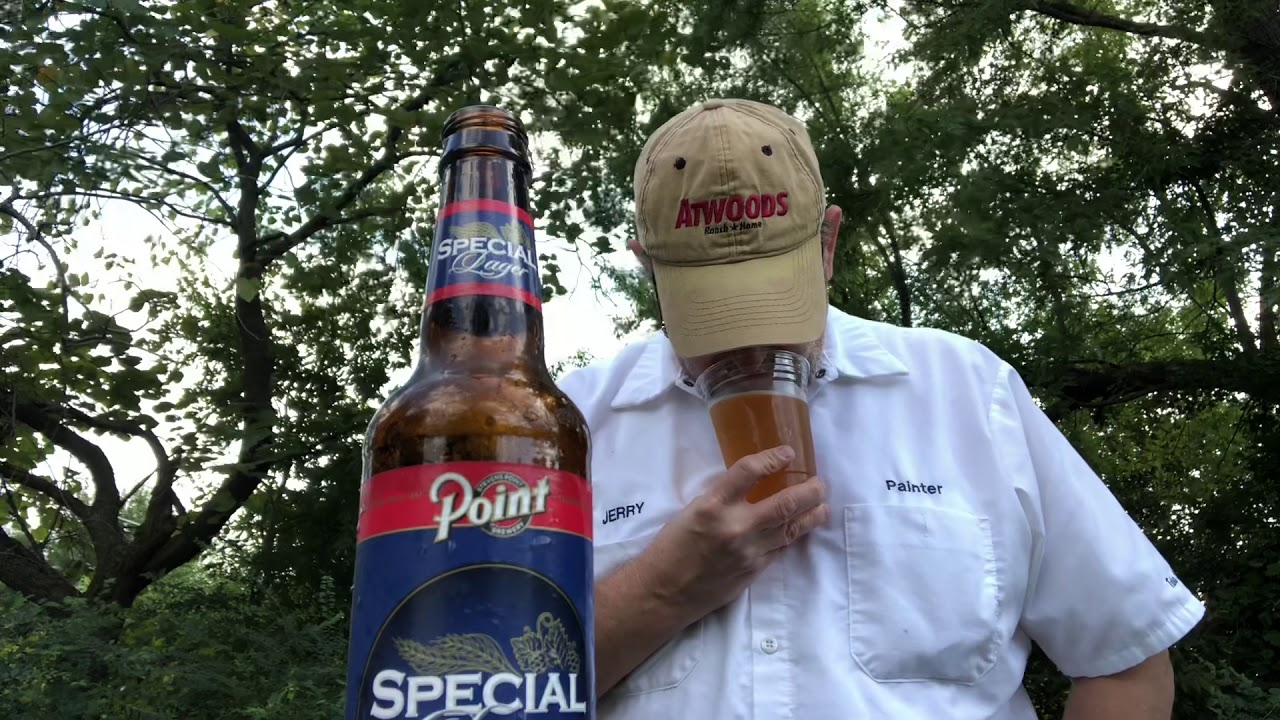 |
| Photo: Jerry Fort the Beer Review Guy |
> Year introduced: 1857
> State of origin: Wisconsin
> Parent company: Stevens Point Brewery
Stevens Point Brewery, the home of the Point Special Lager, celebrated its 160-year anniversary last year. German immigrants George Ruder and Frank Wahle began brewing beer in Stevens Point, Wisconsin, in 1857. After Gustav Kuenzel bought the brewery some 40 years later, he changed its name to the current name in 1902.
Through all of the ownership changes over the past century and a half, Point Special Lager has kept its status as the brewery’s flagship brew. Its origins date back to the brewery’s first year in business.
How to Make Beer
You don’t need a brewery, a science lab, or even a garage. “I used to brew five gallons of cider in my kitchen cupboard. Then I graduated to the bottom of a utility shelf, then my closet,” says Douglas Amport, the other cofounder of Bitter & Esters. Although there’s no ideal time of year for brewing, most beers do well between 60 and 70 degrees Fahrenheit. In hotter climates, you can buy special yeast that works at up to 90 degrees, or, put your fermenter in the fridge or a cooler filled with ice.
Step 1. Sanitize Everything
Everything the beer touches (bucket, siphon, bottling wand, bottles) should be sanitized before you use it and definitely before you begin the bottling process. Don’t slack off here, else your beer could pick up flavors you don't want.
Hospital sterilization isn’t necessary, but it is important to avoid bacteria. You’ll need to clean work surfaces and brewing implements with soap and water. A sanitizer kit such as Star San kills the microbes that change the flavor of your beer. Just pour it on your equipment and wait 30 seconds.
Step 2. Make the Starter Wort
Yeast is an essential part of the beer process. These fungi feast on sugars, making alcohol as they go. The more yeast cells at work, the better the job they do at making alcohol. In this first step of the beer-making process, the yeast cells get a head start, hungrily dividing and populating as they feast on dry malt extract.
Ingredients: 2 quarts water, 6 ounces dry malt extract, 1 package instant starter wort.
First, heat the water and malt to a boil for 10 minutes and then cool to 60 degrees F. You can check the temperature with a thermometer or by rule of thumb (it should be about room temperature). Sanitize the gallon container with a no-rinse sterilizer or by following the manufacturer's instructions. Next, pitch the yeast by tossing in around 33 billion yeast cells (numbers depend on your starter kit) into the 60-degree wort.
Cover the starter wort and put aside. Make sure the container is not airtight (aluminum foil will do the job).
Step 3. Heat the Water and Malt
Heating water and malt for the starter wort, then bottle it in a clean container. Next, you'll add the yeast to the wort and seal the bottle. It's important that you don't make it an airtight seal—using foil as a seal is recommended.
Step 4. Make the Mash
Making a mash is not always necessary—you can brew a perfectly good lager or ale with prepackaged malt extract. But for this recipe, we're going all out, with an all-grain beer—we extract the sugars from the grain ourselves. The recipe we're following is for a beer in the Belgian white or “wit” style. It’s called “Wit Ginger, Not Mary Ann,” and was published by the esteemed beer-brewing magazine, Zymurgy.
Ingredients: 11 pounds of grain, 11 quarts of water.
Our grains include 5 pounds Belgian pilsner malt, 4.5 pounds of German wheat malt, 1.0 pound of flaked oats, and 0.5 pounds of caramel pils malt. Take the mash (all the ingredients above in a pot) and bring it up to 150 degrees F, keeping it at that exact temperature for 1 hour.
Test the mash: The point of mashing is to turn starches in the grain into sugars and extract them into a sweet liquor. After 1 hour, you want to make sure this process has taken place. Take out a spoonful of the water and grain mix and place a drop of iodine in it. The murky brown iodine will change to black in the presence of starch—this means you need to do some more mashing. If there's enough sugar, the color will remain the same.
Step 5. Add the Grain
Add all 11 pounds of grain to the mash and stir. Next, you'll want to prep the strainer. We used rice hulls on the bottom of our DIY strainer—as well as mixed into the mash—to make sure that the grains didn't gum up the works.
Then you're ready for straining and sparging. Pour the mash into a lauter tun, a big strainer used for separation of the extracted wort, to drain the sweet liquor from the grain. For our budget lauter tun, we drilled 1/8-inch holes into one 5-gallon bucket and placed this strainer on top of another 5-gallon bucket.
Step 6. First Runnings
Capture the runoff liquor in your brewpot. This liquor is called the first runnings. Once all the liquor has run off, heat the rest of the water—1/2 gallon per pound of grain at 180 degrees F (according to this recipe)—over the grain in the lauter tun. Again capture the runoff (second runnings) in the brewpot. The sweet liquor in the brewpot is now what's known as a wort, and it's ready to boil.
Step 7. The Boil
Ingredients: 1 ounce 4.8 percent alpha-acid Styrian Goldings hops, 1/2 teaspoon of ginger, 1 cinnamon stick
It's time to raise the wort to a vigorous boil. The boil kills offending bacteria or wild yeast and releases DMS, a chemical byproduct of heating that gives a flavor akin to sweet corn. During this process, watch carefully, as the wort is prone to boil over, resulting in a sticky mess that makes for a tough cleanup.
As soon as a boil is reached add the hops to the wort and continue to boil for 60 minutes. Hops added at this point in the process give beer its bitterness, because of the alpha acids that are extracted.
Since Belgian wits aren't terribly bitter, our recipe called for just 1 ounce of 4.8 percent alpha-acid Styrian Goldings hops (the higher the percentage of alpha acids the more bitter the hops). In most beer recipes another addition of hops is made 2 to 5 minutes from before the end of the boil to give flavor and aroma. Our recipe forgoes these additions—wheat beers are light on the hop flavor—but it does call for an addition of 1/2 teaspoon of ginger and a cinnamon stick 5 minutes before the end of the boil.
Step 8. Cool The Beer and Pitch The Yeast
Boiling wort should be cooled as quickly as possible since the cooling period is the time when the beer is most vulnerable to microorganisms present in the air. Cooling can be achieved with a wort chiller, like the one pictured here, or by dipping the brewpot into a sink full of ice water. Do not add ice directly to the beer.
The beer should be cooled to 68 degrees F, strained and transferred to a sanitized carboy, where the beer will stay through its first few days of fermentation. Affix a blowoff tube to the top of the carboy—the other end of it should be placed under a couple inches of water to seal it from the outside environment while the carbon dioxide escapes. You'll start to see a vigorous fermentation at anywhere from 8 to 26 hours into the process.
After one week, visible fermentation will have subsided and the wort should be transferred (via a siphon) to another sanitized container. Our recipe called for the addition of a vanilla bean at this stage. Two weeks after this transfer the beer should be bottled.
Step 9. Bottling
Take 3/4 cup of corn sugar and boil it for 15 minutes in a pint of water. Cool the sugar water and add it to the bottom of a bottling bucket. Then transfer the beer to this bucket. The sugar water gives the yeast something to eat while inside the sealed bottle for a final stage of fermentation, where the beer gets its characteristic bubbles. After two weeks at room temperature, the beer should be fully carbonated and ready to be drink.
Step 10. Name Your Beer
Pick whichever sounds better, your first or last name, but never both. If you’re having a hard time deciding between them, pick the one that the ring announcer at a UFC fight would draw out longer. The easiest option is to simply add the style of beer after that name. If it’s your first name, it gets a possessive (Cameron’s Pale Ale). If it’s your last name, it does not (Johnson Porter).
If you’re feeling creative, beer makers love word play (Hopular Mechanics, Augmented Reality). For subsequent batches, add a number at the end.
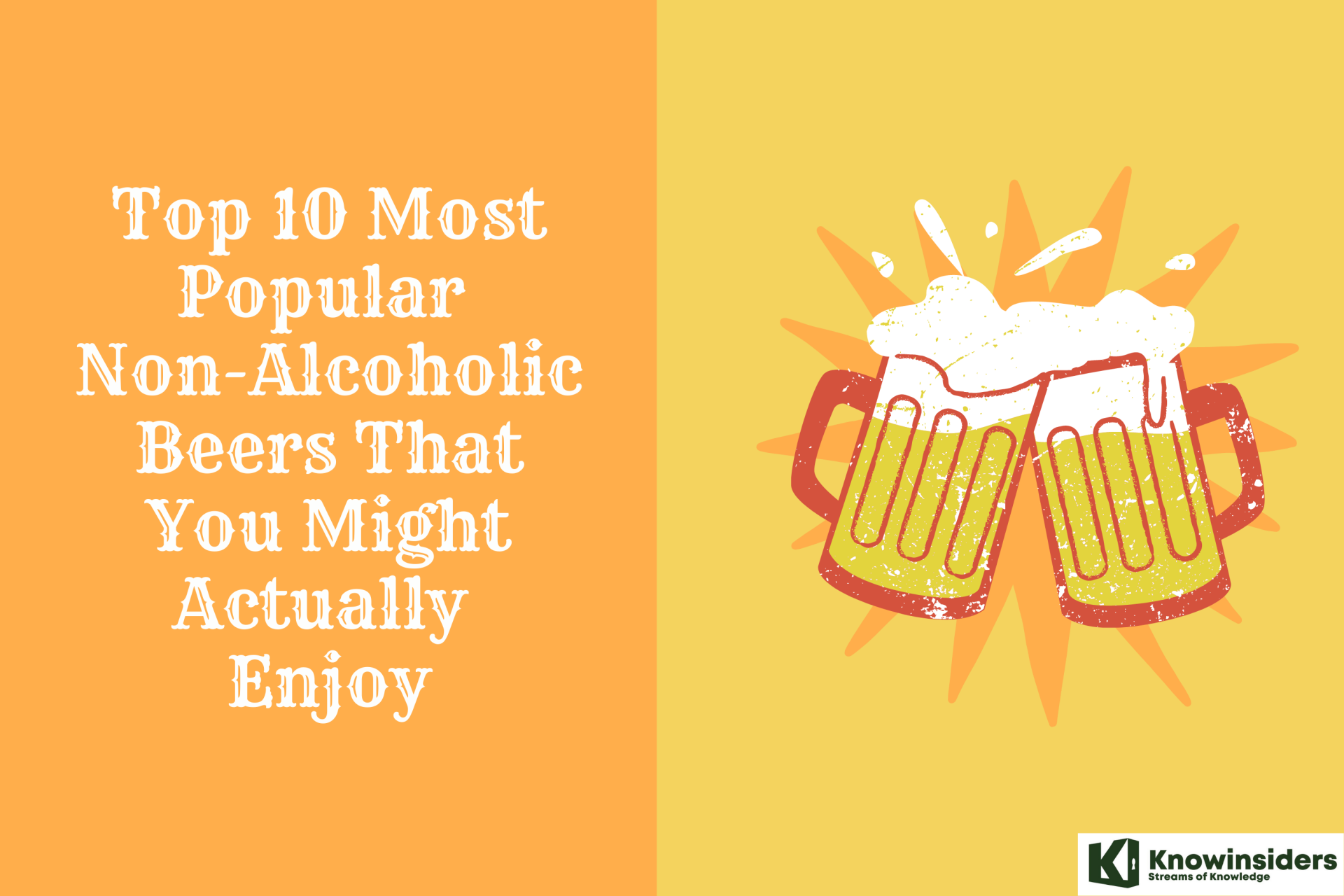 Top 10 Most Popular Non-Alcoholic Beers That You Might Actually Enjoy Top 10 Most Popular Non-Alcoholic Beers That You Might Actually Enjoy Today’s best Non-alcoholic (NA) offerings pack all the flavors found in traditional beer, with none of that next-day regret. Here are 10 of the most ... |
 Beer Can Appreciation Day: Dates, Celebrations, History, Meaning and Facts Beer Can Appreciation Day: Dates, Celebrations, History, Meaning and Facts A fan of beer may know that there is a special day that people value beer can named Bear Can Appreciation Day (January 24th). |
 10 Best Cities for Beer Lovers In The World 10 Best Cities for Beer Lovers In The World While beer is a popular beverage throughout the world, some places have mastered the science of brewing more than others. Check out the 10 best ... |
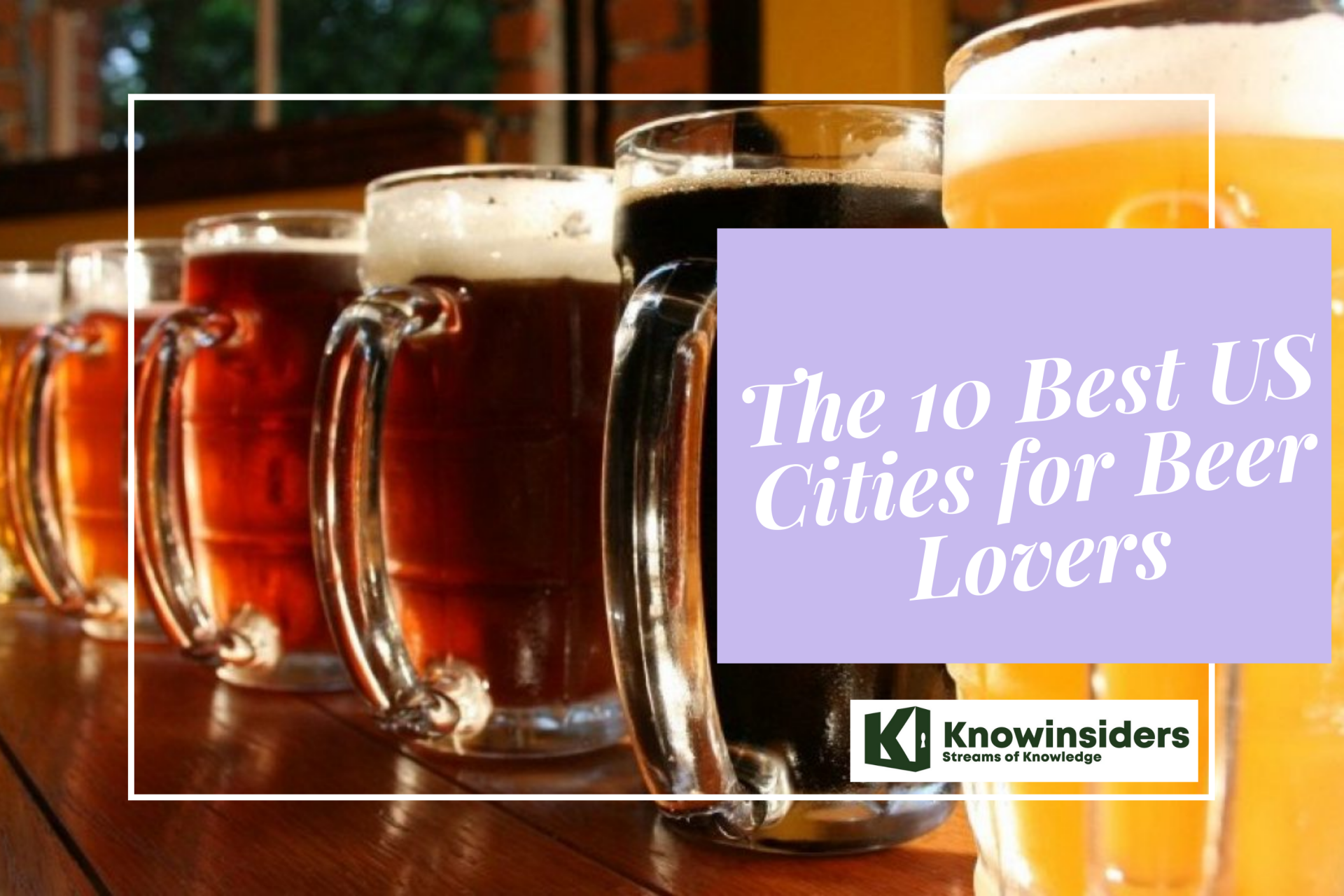 The 10 Best US Cities for Beer Lovers The 10 Best US Cities for Beer Lovers According to a Lawn Love report on September 29th, these 10 cities right below are the best US cities for beer lovers in 2021. Check ... |









